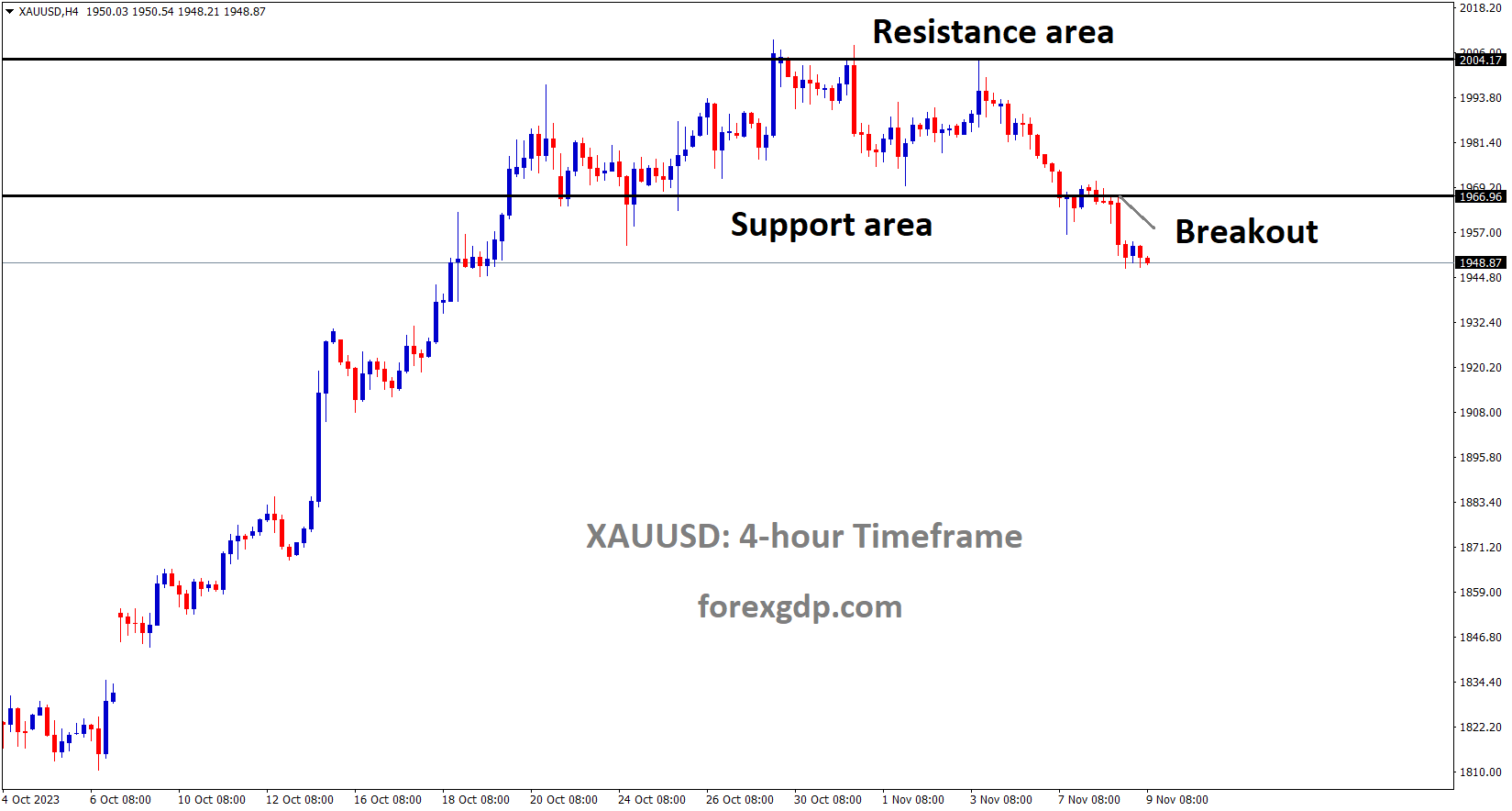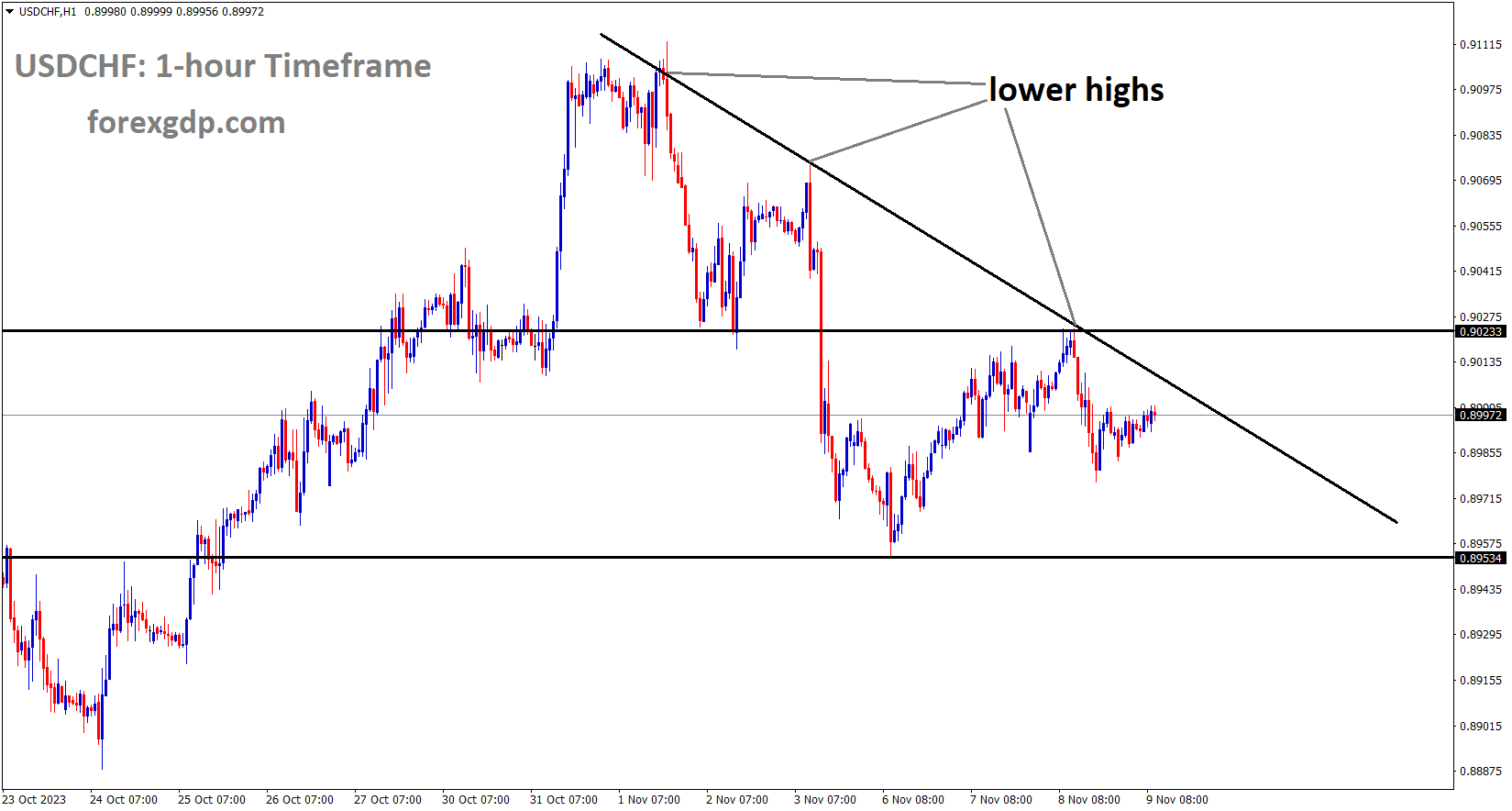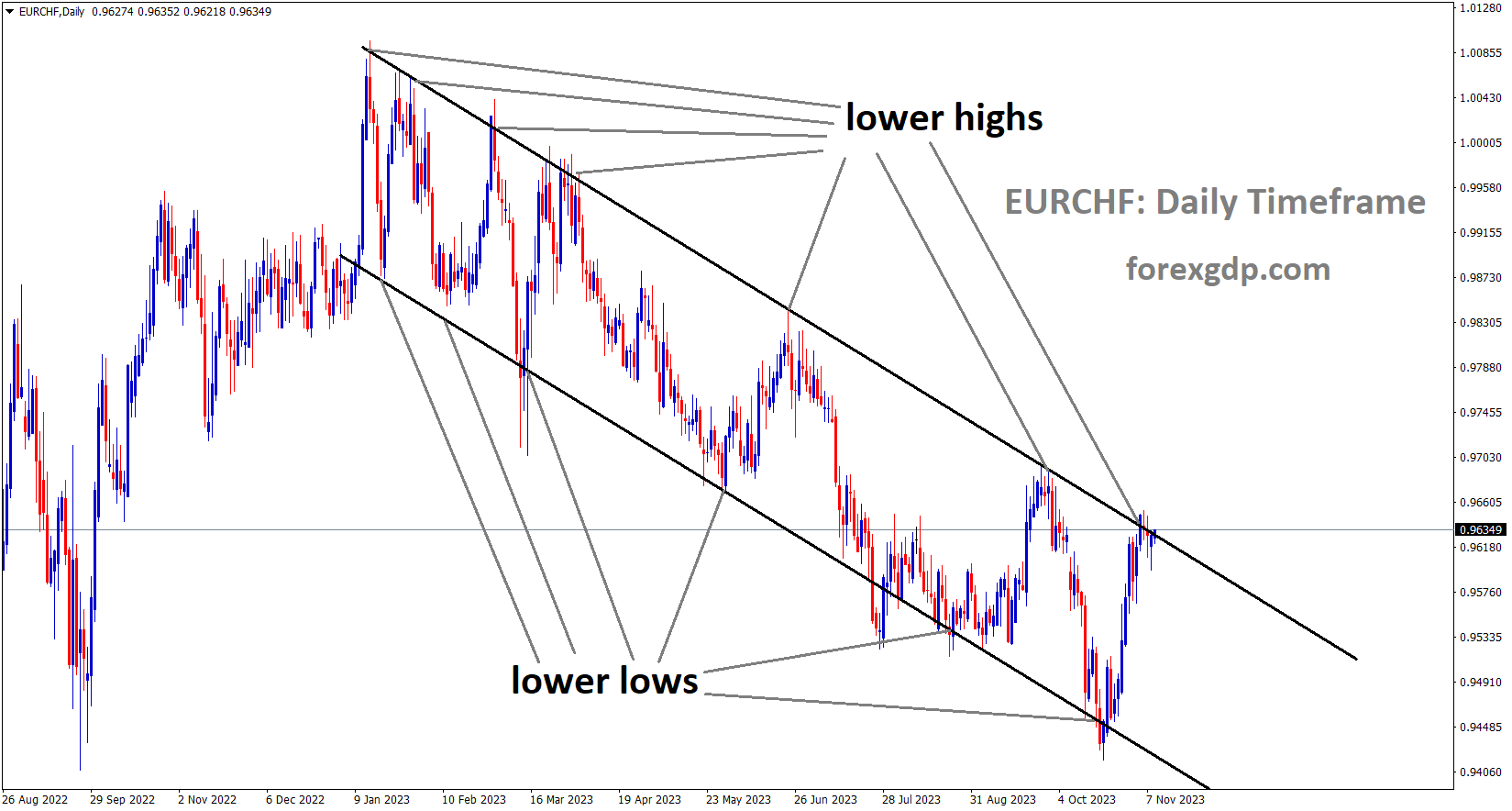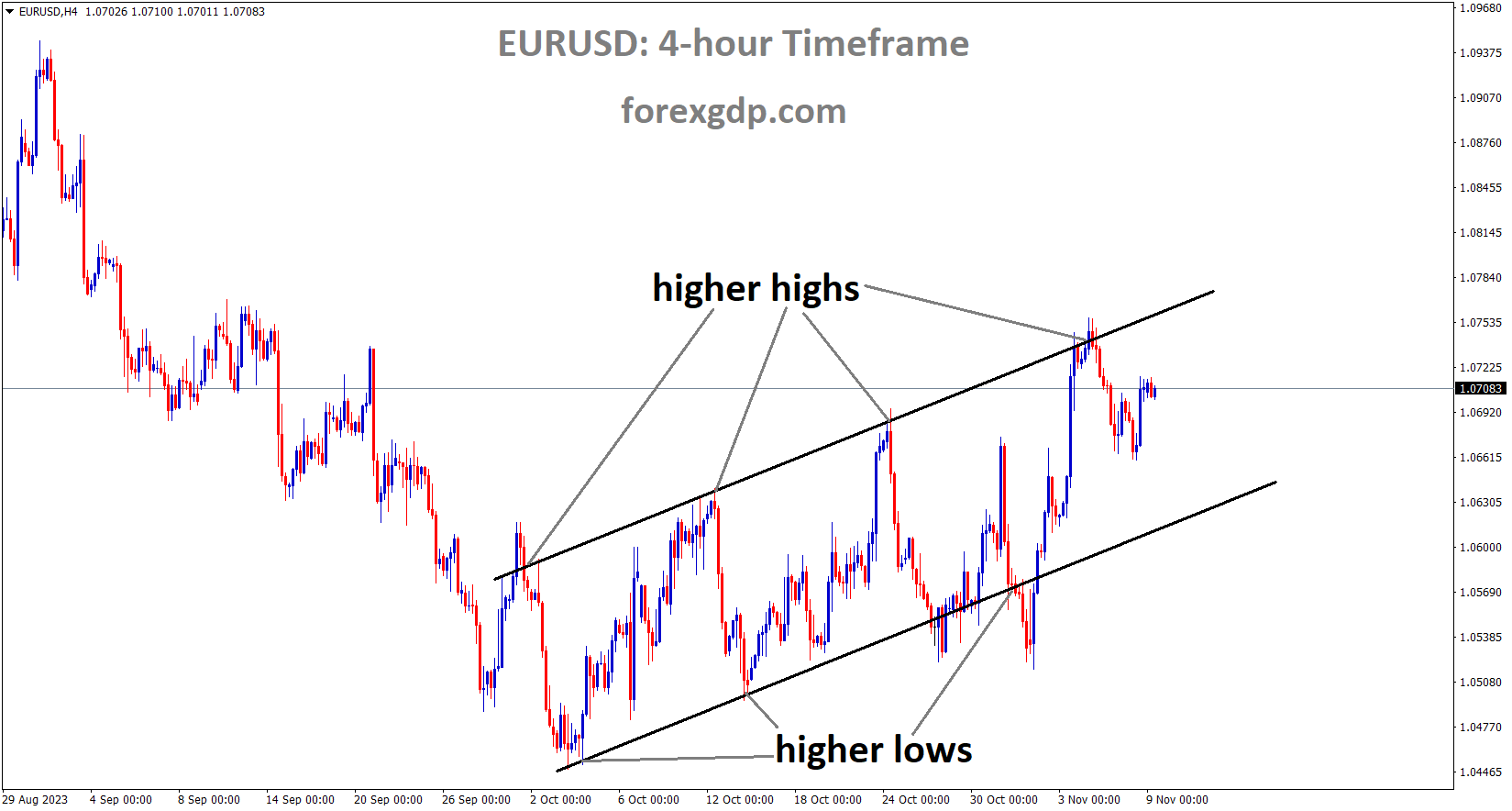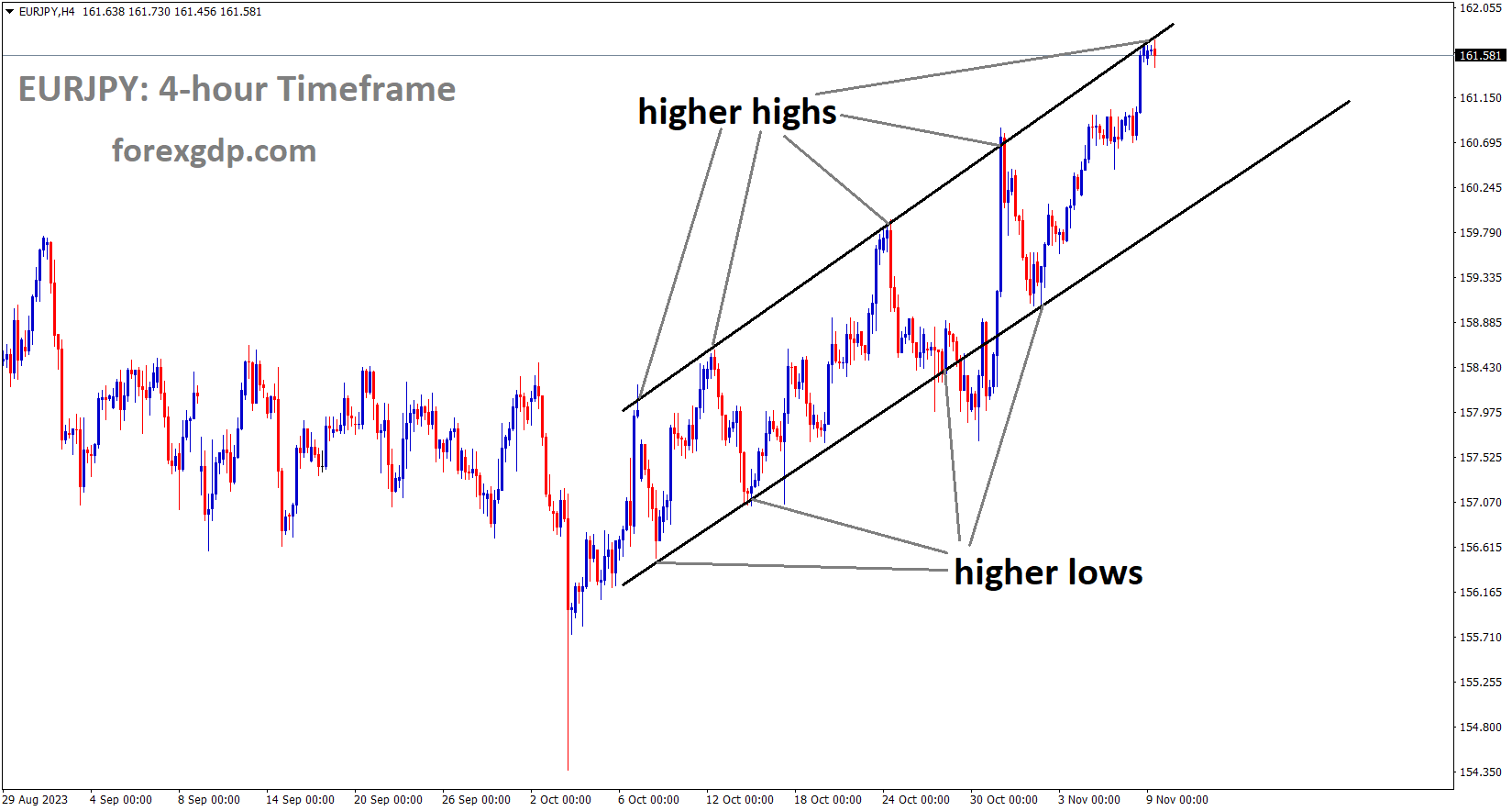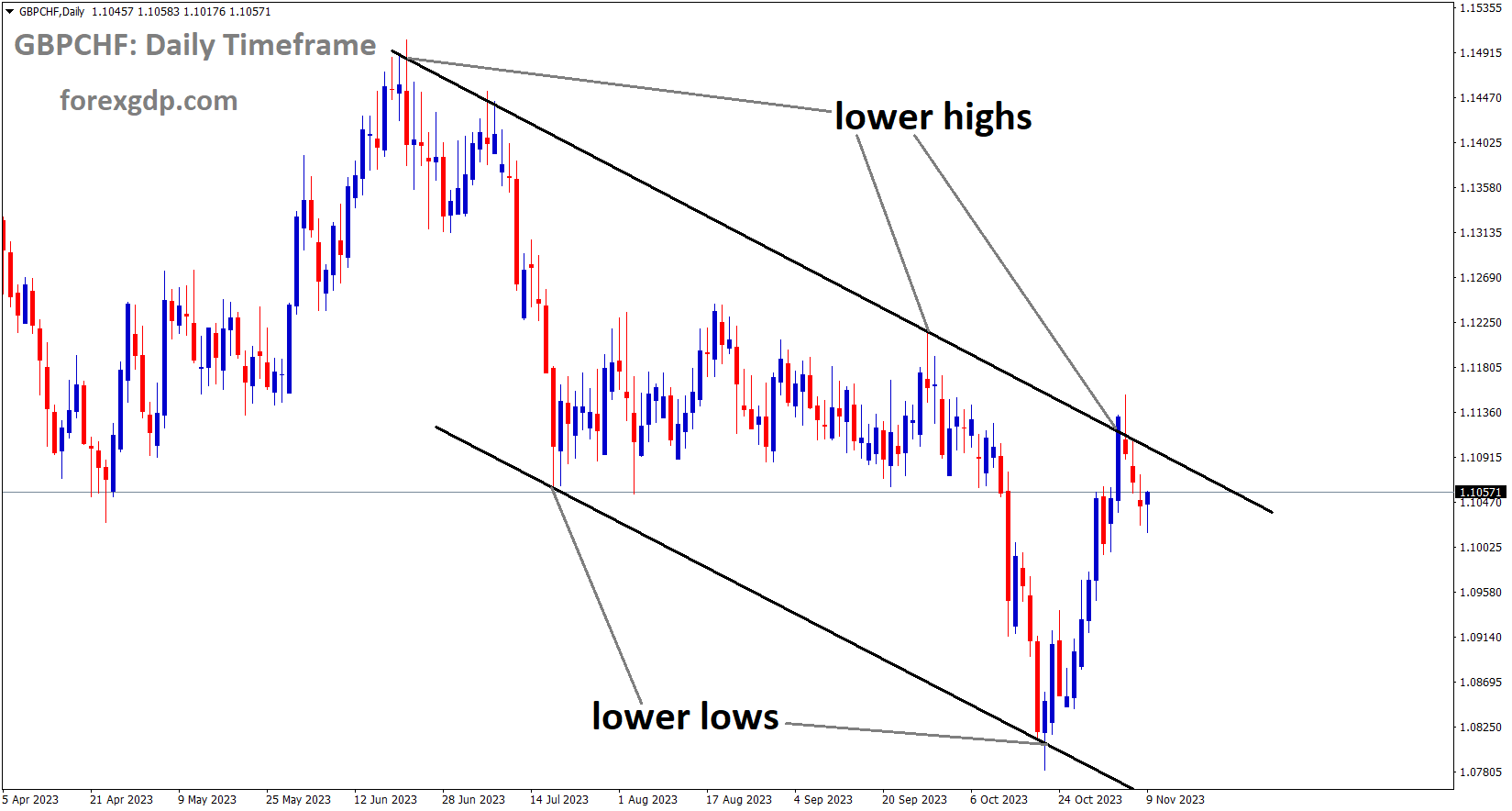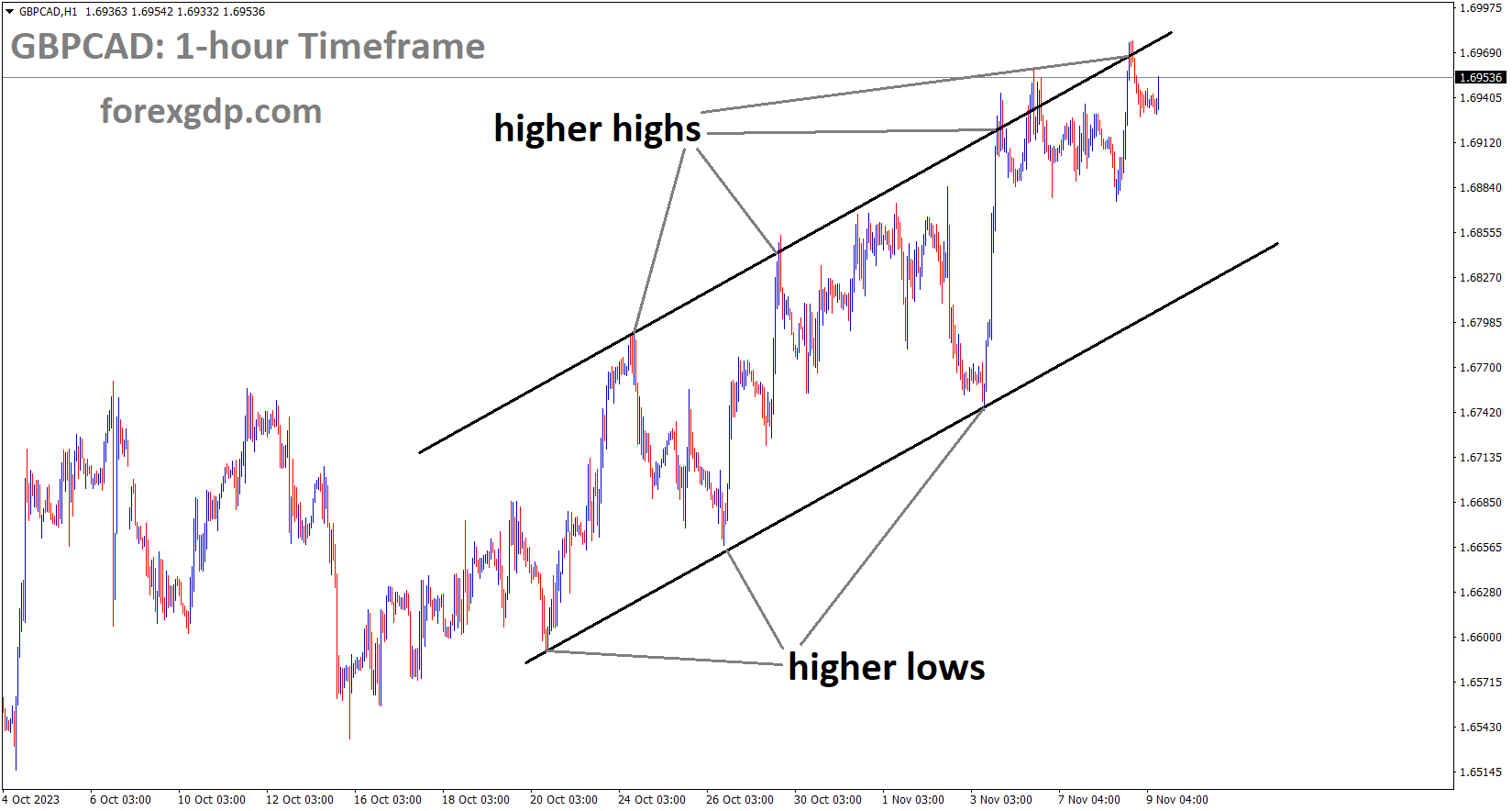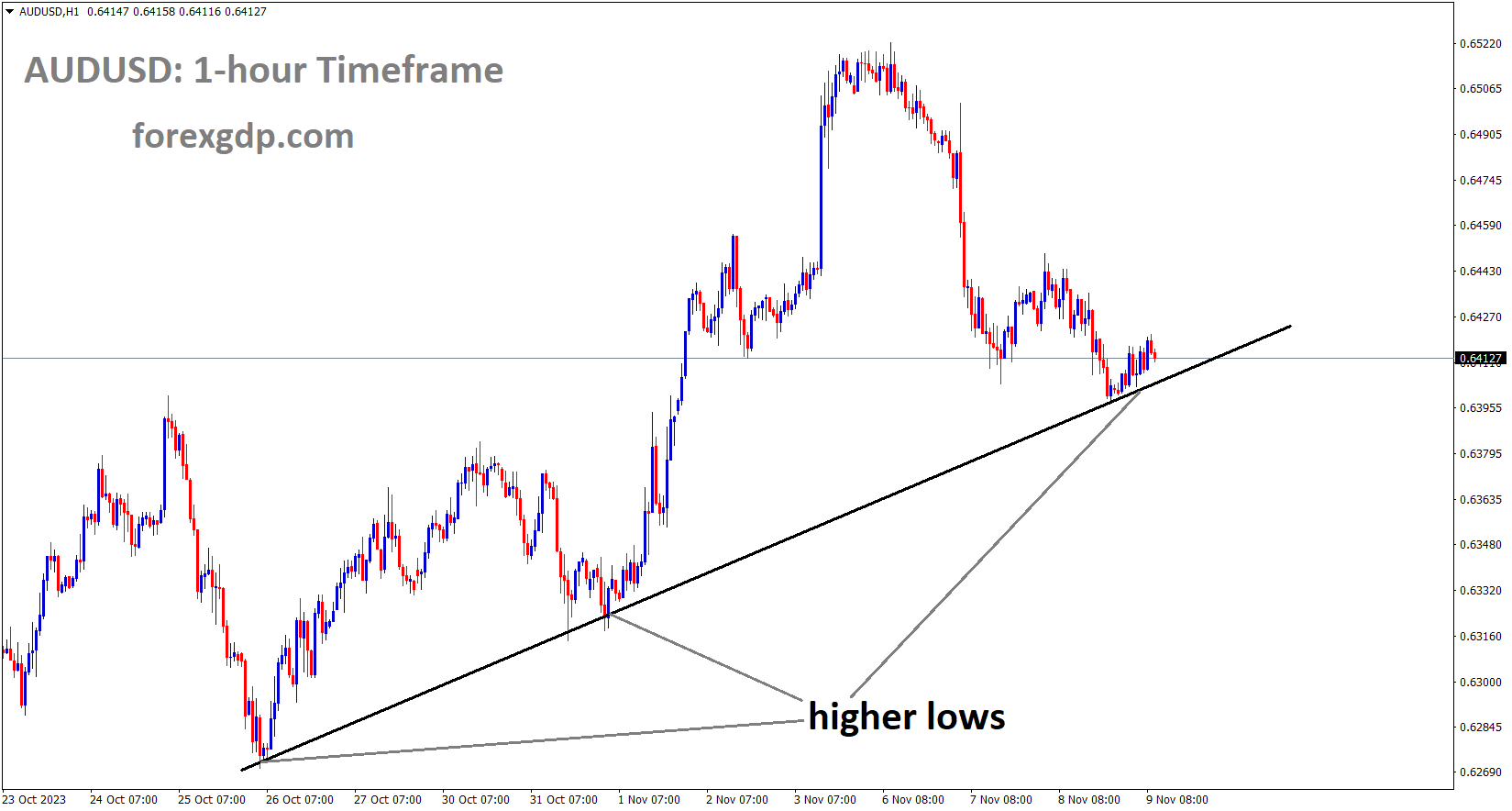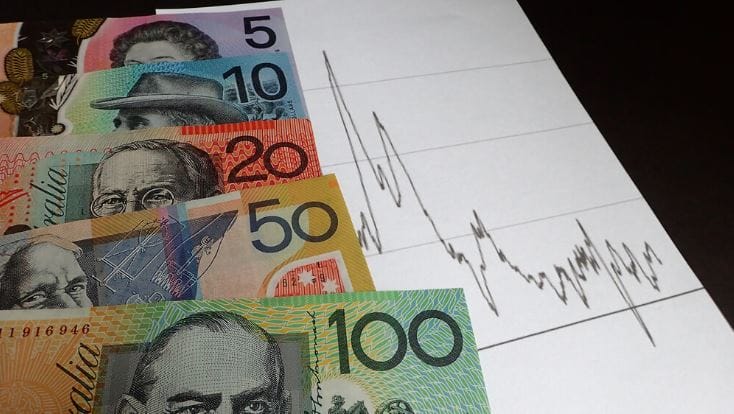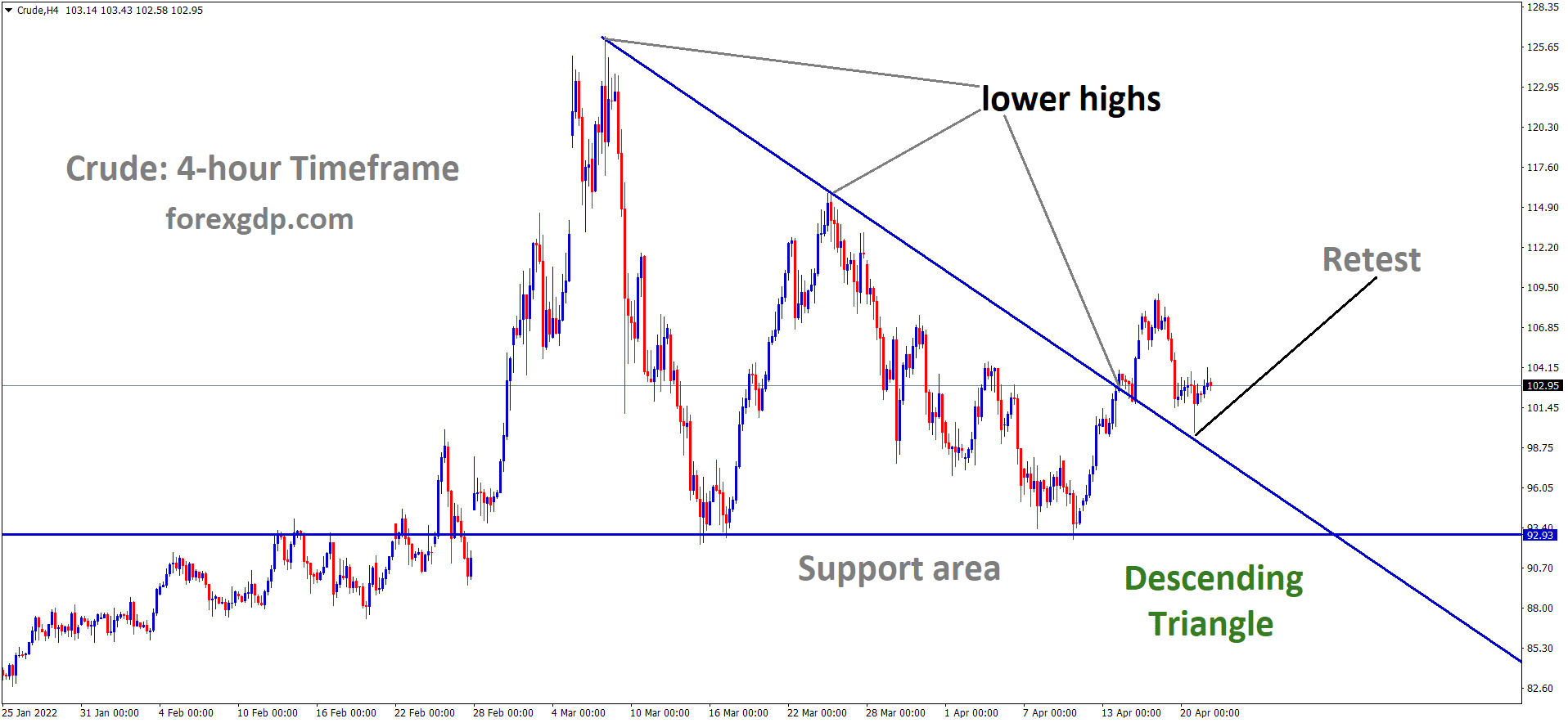GOLD Analysis:
XAUUSD Gold price has broken the Box pattern in downside
Gold prices have decreased as Israel’s wartime anxiety has subsided. Following the Fed’s dovish stance, the US dollar has been declining. The two days of the FED’s Powell speech will determine the gold price for this week.As we enter the European session, the price of gold is still struggling to make any kind of significant rebound and is hovering around the lowest point it has been since October 19 was touched the day before. This week, a number of Federal Reserve (Fed) officials gave conflicting signals regarding the trajectory of future rate hikes, which has caused flows away from the non-yielding yellow metal since this week’s beginning. Moreover, investors do not seem to be as concerned about the Israel-Hamas conflict getting worse. This is thought to be one more element that lowers demand for the precious metal that serves as a safe haven. The growing consensus that the US central bank is drawing closer to the end of its policy-tightening campaign has, however, protected the gold price from further declines. The US Dollar is kept weak by the expectations, which cause the yields on US Treasury bonds to continue declining. In addition, China’s economic problems and the general cautious market sentiment are perceived as providing some support for the precious metal and containing the downside. Ahead of Fed Chair Jerome Powell’s speech, traders are now waiting for some momentum from the release of the US Weekly Initial Jobless Claims data.

The US dollar was weakened and the yield on the benchmark 10-year US government bond held close to its lowest level in over a month, which helped contain losses for the non-yielding yellow metal. Officials from the Federal Reserve maintain that more policy tightening is possible, but an 18% chance of rate cuts as early as March is indicated by the CME FedWatch Tool. Fed President Neil Kashkari questions the adequacy of the current policy in light of the US economy’s resilience, while Fed Governor Lisa Cook believes it is sufficiently restrictive for price stability. Fed Governor Michelle Bowman spoke about more rate increases this year, while Chicago Fed President Austan Goolsbee emphasized the importance of concentrating on how high rates should stay. Fed Chair Jerome Powell, meanwhile, was scheduled to speak again at another conference this Thursday and refrained from discussing monetary policy or the state of the economy on Wednesday. As the outlook for the domestic economy continues to deteriorate, the most recent Chinese inflation data, which were released earlier on Thursday, indicated persistent disinflationary pressures. According to the National Bureau of Statistics, the annual rate decreased by 0.2% and the headline CPI in China decreased by 0.1% in October following a 0.2% increase in the previous month. For the thirteenth consecutive month, October saw a decline in China’s Producer Price Index (PPI) of 2.6%, which was slightly higher than the previous month’s 2.5% decline but still better than the 2.8% decline predicted.
SILVER Analysis: 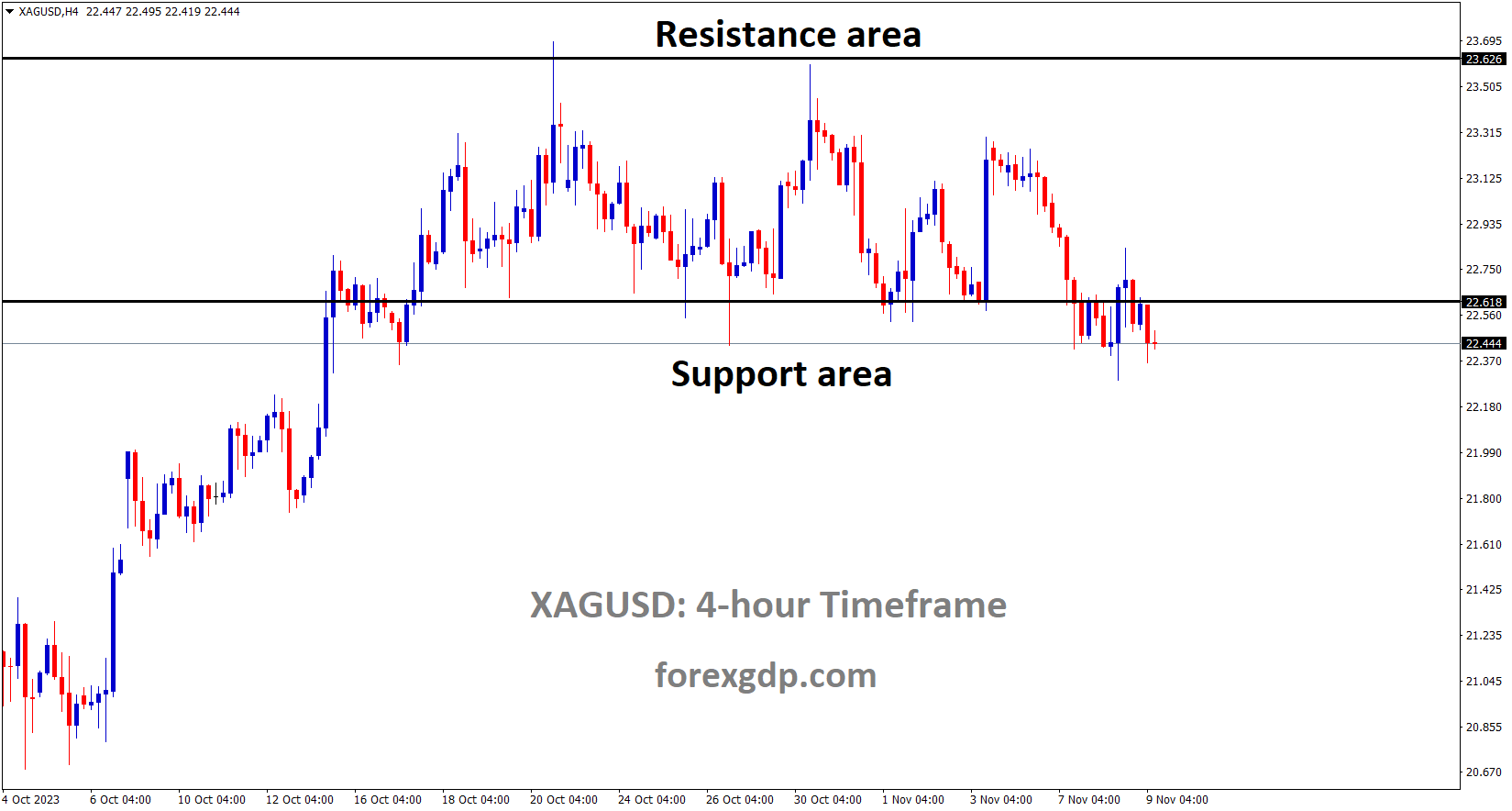
XAGUSD Silver price is moving in the Box pattern and the market has reached the support area of the pattern
US Federal Reserve Governor Patrick Harker stated that rate increases will depend on the data and that inflation will continue to decline, with a 3% decline expected in 2024 and a further decline in 2025. In 2024, unemployment will reach 4.5%, after which it will decline in 2025.
Regarding the US Federal Reserve’s (Fed) interest rate outlook, Patrick Harker, President of the Philadelphia Fed, stated that the data could determine the direction of the Fed’s next rate decision. at the most recent FOMC meeting, supported a stable interest rate stance. It is time to assess the effects of previous rate increases. Fed will not lower rates anytime soon; it will remain higher for longer. The labour market is becoming more balanced. In 2024, the unemployment rate will increase to 4.5% before declining. Customers with confidence will contribute to a soft landing. It is unclear at this time whether customers have spent money. Although there is not a recession, growth will probably slow. decreasing gradually, reaching 3% in 2024 and then 2% after that.
USDCHF Analysis:
USDCHF is moving in the Descending trend line and the market has reached the lower high area of the trend line
Switzerland was taken off the list of currencies used by US authorities to manipulate yesterday. SNB has to inform US authorities about the state of the economy and money today.
In response to the U.S. Treasury removing Switzerland from its watch list of nations that looked to be manipulating their currencies, the Swiss National Bank responded on Wednesday. The decision was reported in the Treasury’s semi-annual report on the currency policies of the main trading partners of the United States, and the SNB said it took note of it. The SNB said in a statement on Wednesday that it continues to communicate with US authorities in conjunction with Swiss authorities to provide an explanation of Switzerland’s monetary policy and economic circumstances. We are happy to continue these conversations.

After the SNB made large purchases of foreign currencies with the intention of undermining the safe haven franc as its value increased, Switzerland found itself in conflict with the United States. Since then, the SNB has reversed course and allowed the franc to depreciate as a means of containing import inflation.
EURCHF Analysis:
EURCHF is moving in the Descending channel and the market has reached the lower high area of the channel
Although Switzerland had surpassed all three thresholds for potential manipulation, the Treasury declined to designate it as a manipulator in its report from November 2022. However, the Treasury ended its enhanced analysis of Switzerland in June and downgraded its assessment of the nation. South Korea and Switzerland were removed from the monitoring list on Wednesday, having satisfied a single requirement for two consecutive periods. A nation had to surpass two of the following three requirements in order to be eligible: a trade surplus with the United States of America of more than $15 billion; a high current account surplus worldwide of more than 3% of GDP; and consistent net foreign currency purchases of more than 2% of GDP over a 12-month period. The designation had prompted intense negotiations between U.S. and Swiss officials, who explained that Switzerland’s policies were intended to lessen the negative effects of the strong Swiss franc on the country’s export-oriented economy rather than to obtain a trade advantage.
EURUSD Analysis:
EURUSD is moving in an Ascending channel and the market has fallen from the higher high area of the channel
The euro fell versus the US dollar last month as German inflation slightly decreased. By year-end or year-end 2024, the ECB is predicted to decrease or increase by + or – 30bps.
With some US central bank speakers out-hawking their European Central Bank counterparts, the euro has given back some of its recent gains following the NFP. Particularly, the Fed’s Logan and Bowman emphasised the US economy’s resilience and the potential need for more interest rate increases. To sum up, Fed officials will probably take a wait and see stance because additional information is required in light of the most recent NFP miss. a significant drop in German inflation using both MoM and YoY metrics. This figure represents the largest economy in the euro area and is a proxy for the broader inflationary environment. Speakers from the ECB are due to speak later today; this could give their speeches some dovish overtones and hurt the euro. Reduced retail sales are predicted for the euro area, which could worsen the situation.
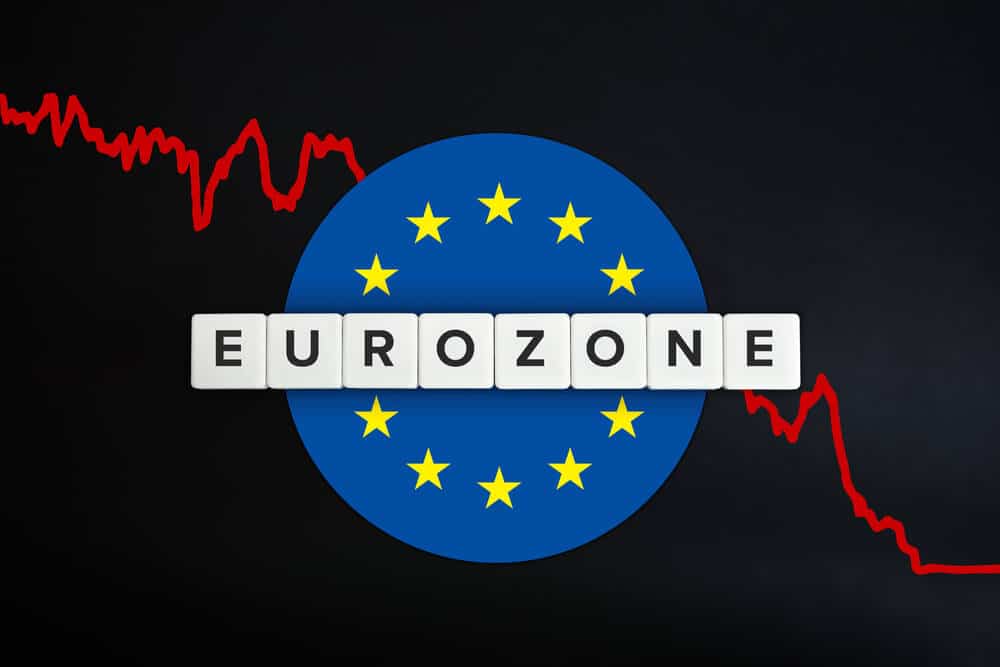
Later today, the spotlight will return to the Federal Reserve, with Fed Chair Jerome Powell at the centre of attention. We will analyse the speech to look for any hints or possible alterations to the previous story. Mr. Powell will be followed by other Fed speakers, but the markets’ reactions will probably be directed at the Fed Chair. The ‘dovish’ re-pricing of implied Fed funds futures to pre-NFP levels demonstrates the erratic nature of financial market expectations. By year’s end in 2024, the ECB is predicted to reduce rates by an additional +/-30bps, which could sustain the US dollar ceteris paribus. The Middle East’s ongoing conflict could strengthen the USD’s safe haven advantage over the EUR.
EURJPY Analysis:
EURJPY is moving in an Ascending channel and the market has reached the higher high area of the channel
The governor of the Bank of Japan, Ueda, stated that since businesses raised labor costs and material prices, inflation will soon reach the 2% target in a sustainable manner. Thus, the ultra-easy monetary policy is still in place.
Governor of the Bank of Japan Kazuo Ueda stated on Thursday that wages should be growing at least as fast as inflation when it reaches 2% sustainably. Businesses are acting more actively than in the past to increase wages and prices.

To determine whether the inflation target will be sustained, it will be important to assess whether wage increases will spread throughout society and cause businesses to raise prices in anticipation of future wage increases. Until a sustained 2% inflation target is within sight, we will continue to operate under the negative rate, ycc framework. The order in which we terminate these policies will be determined by changes in the economy and prices at the time of exit.
GBPCHF Analysis:
GBPCHF is moving in the Descending channel and the market has fallen from the lower high area of the channel
Governor Bailey of the Bank of England stated that rate cuts are not currently in the cards and that the 2% inflation target will be reached in two years. Longer term rates will be higher; future rate decisions will only be based on data.
Governor Andrew Bailey of the Bank of England did not help the British pound today as he restated Chief Economist Huw Pill’s prediction that inflation would decline sharply, as was the case with the Euro area earlier in the day. Nevertheless, the Governor stuck to his “higher for longer” stance, estimating 2% inflation at the two-year mark.

With no additional rate hikes and an increase in cumulative interest rate cuts to 65bps by December 2024 from 50bps just a week ago, money markets have generally been dovishly repriced. Governor Bailey of BoE It is really too soon to discuss rate reductions. The main takeaway is that, despite potential upside risks, we think restrictive policy will be necessary for a considerable amount of time. We believe that policies are now restrictive and that economic growth is very muted.
GBPCAD Analysis:
GBPCAD is moving in an Ascending channel and the market has reached the higher high area of the channel
In the event that inflation declines, Governor Tiff Mackhelm of the Bank of Canada stated that rate increases are not possible. Canadian Dollar faltered following the governor’s speech.
The low Crude Oil prices could keep undermining the Loonie, which is correlated with commodities. The likelihood of Middle East supply disruptions following the Israel-Hamas conflict appears to have diminished for investors.
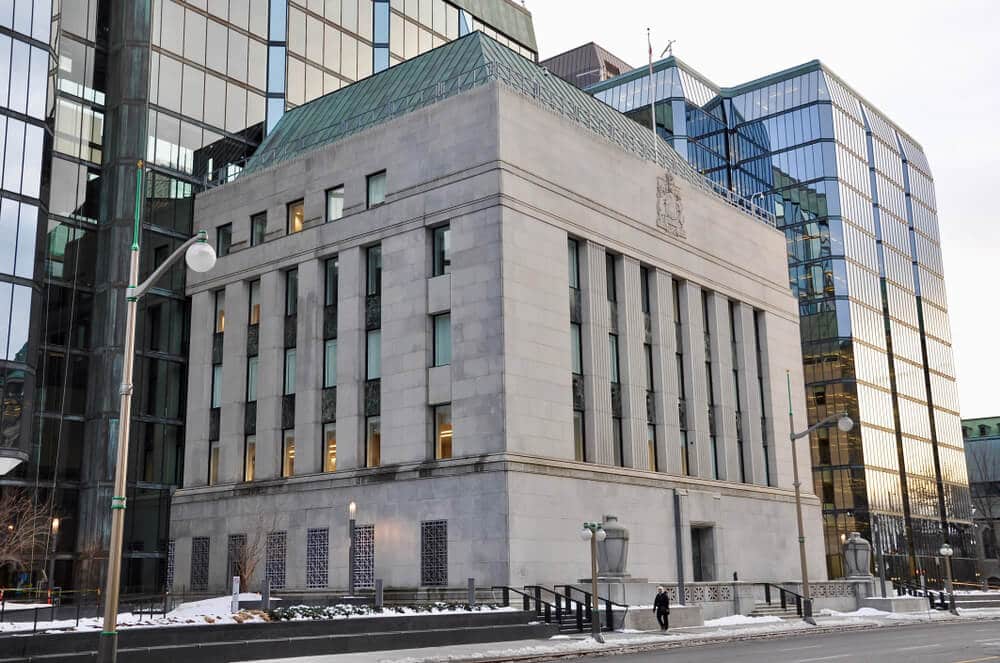
This pulled the black liquid closer to its four-month low on Wednesday, along with an easing of worries about limited global supplies and a worsening outlook for the world economy, both of which are expected to hurt demand for fuel. And Governor Tiff Macklem of the Bank of Canada had stated that if inflation declines as anticipated, the central bank might not need to increase its benchmark overnight rate
GBPNZD Analysis:
GBPNZD is moving in the box pattern and the market has rebounded from the support area of the pattern
NZD dollar depreciation in the market following the RBNZ survey’s prediction of lower inflation this year, down from 4.17% to 3.60%. Expectations for the next two years are 2.76%, up from 2.83%.
A gloomy forecast for the world economy is the cause of the market’s negative sentiment. Being a significant exporter of commodities, New Zealand’s currency would not benefit from a slowdown in global growth. The Reserve Bank of New Zealand (RBNZ) released an inflation report overnight that did not bode well for the Kiwi. It revealed a general belief that prices will decline in the near future, potentially due to a slowdown in the economy and a decline in demand for goods and services.
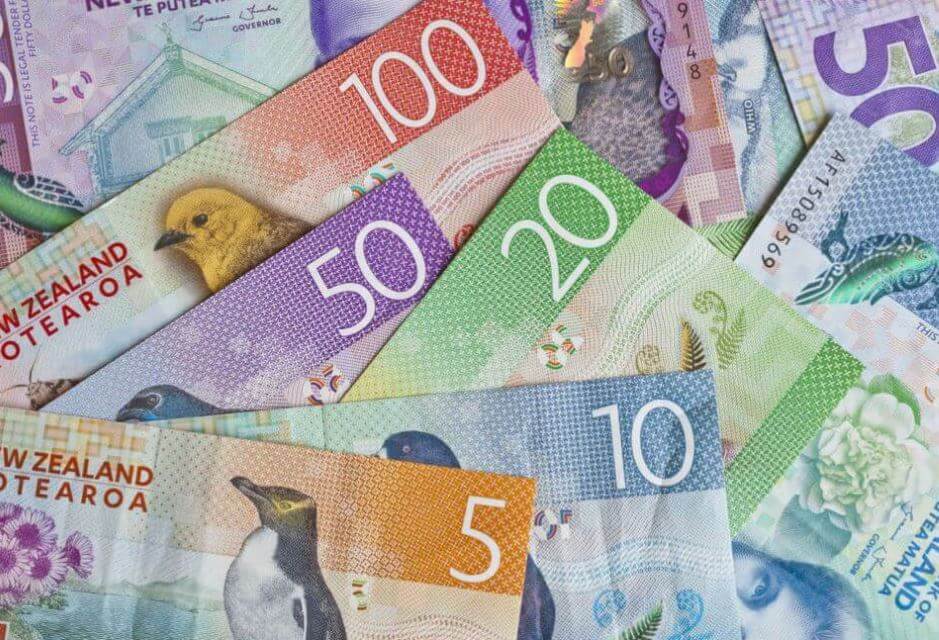
A generally risk-off tone causes the New Zealand Dollar to trade at a lower value relative to the US Dollar. The RBNZ’s release of its Q3 inflation expectations report caused the Kiwi to lose even more ground against the US dollar. Inflation was predicted by respondents to decline in the upcoming year compared to the previous report. After a year, they recorded inflation of 3.60%, which is less than the Q2 report’s 4.17%. According to Stats NZ, actual inflation in New Zealand decreased to 5.6% in the third quarter from 6.0% in the preceding quarter. The Reserve Bank of New Zealand, whose main cash rate is currently 5.50%, is unlikely to hike interest rates in light of the lower inflation expectations. A currency’s value is generally strengthened by higher interest rates because they attract more capital inflows from overseas investors seeking greater returns The RBNZ report also revealed a decline in inflation expectations for the next two years, from 2.83% to 2.76%.
AUDUSD Analysis:
AUDUSD is moving in an Ascending trend line and the market has reached the higher low area of the trend line
According to a UOB analyst, rate cuts will occur in the second half of 2024, or Q2, after the RBA maintains higher rates through Q1. Next year, we anticipate an 85 basis point rate cut, which could reach 3.5% in the fourth quarter of 2024.
China’s CPI data decreased from 0.0% in September to -0.20% in October. PPI data dropped from 2.7% in September to 2.6% now.
Alvin Liew, a senior economist at UOB Group, offers his thoughts on the RBA’s most recent interest rate decision. The Reserve Bank of Australia (RBA) decided to increase the cash rate target by 25 basis points, to 4.35%, as we had anticipated. We and markets projected the decision widely. According to the Bloomberg survey, three economists predicted no change, while 29 of the 32 economists surveyed anticipated a 25 basis point increase. Exchange Settlement balance interest rates were also increased, rising from 4.25 percent to 4.25 basis points. After the RBA held rates steady for four meetings in a row, this is the first hike under new governor Michele Bullock of the RBA.

In its accompanying statement, the RBA justified the hike by stating that although Australia’s inflation has passed its peak, it is still too high and has been more persistent than anticipated a few months ago. We maintain our unchanged view on RBA policy in light of the anticipated hike on Tuesday and the more dovish-sounding policy guidance in November. For December and the first quarter of 2024, we anticipate that the RBA will maintain the peak policy rate of 4.35%. The first rate reduction is then anticipated to occur in the second quarter of 2024. We anticipate reducing the RBA cash rate by 85 basis points overall in Q4 of 2024, to bring it down to 3.5%.
After remaining unchanged at 0% in September, China’s Consumer Price Index (CPI) decreased 0.2% year over year in October. The market was expecting a 0.1% decline. Compared to September’s 0% figure and an estimated 0.1% fall, Chinese CPI inflation fell to 0.1% in October. October saw a 2.6% YoY decline in China’s Producer Price Index (PPI), compared to a 2.5% decline in September. The data exceeded forecasts for the reported period’s 2.7% decline.
Don’t trade all the time, trade forex only at the confirmed trade setups.
Get more confirmed trade setups here: forexgdp.com/buy/

